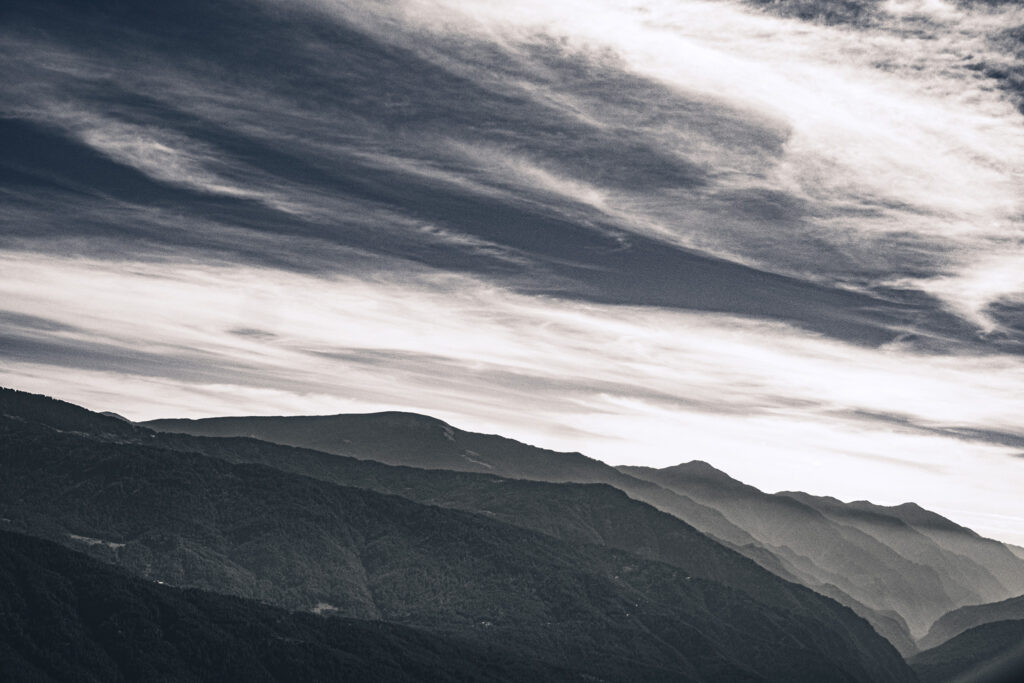
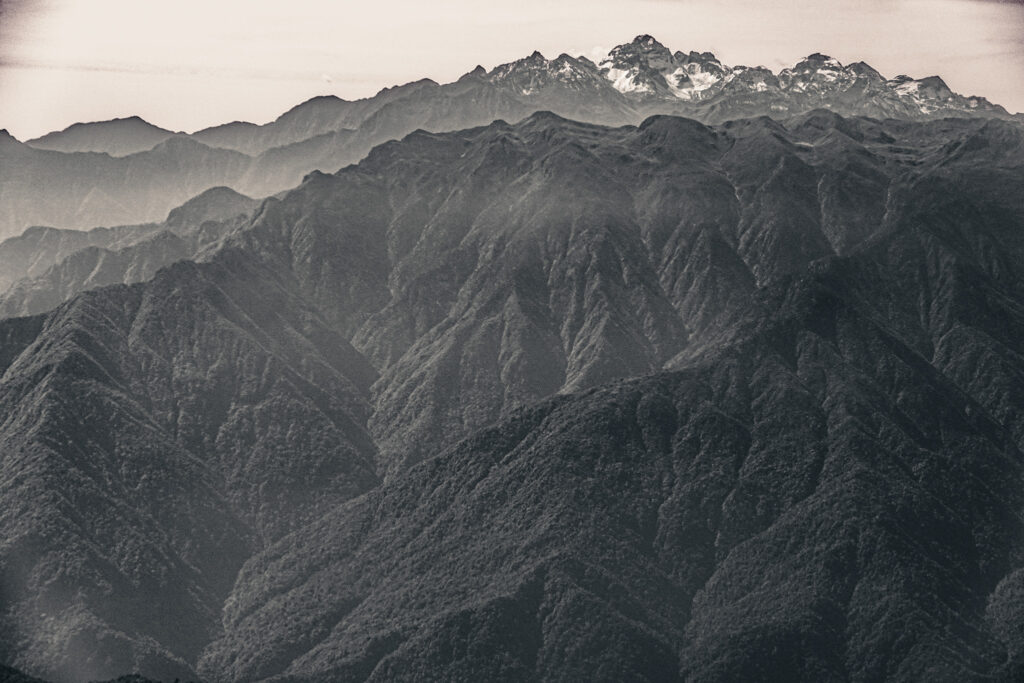
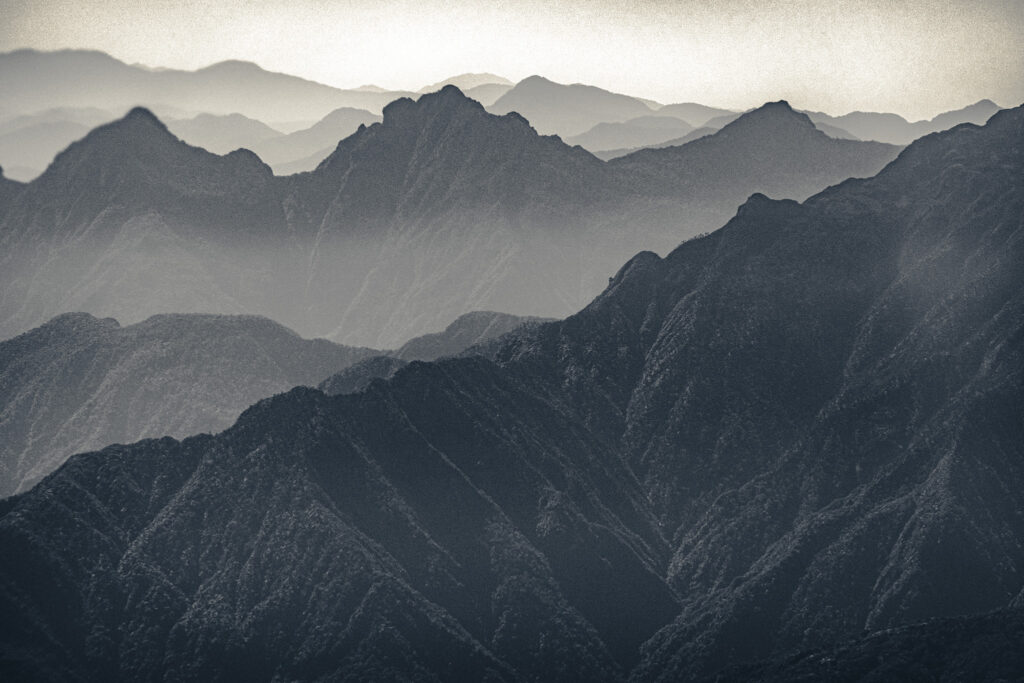
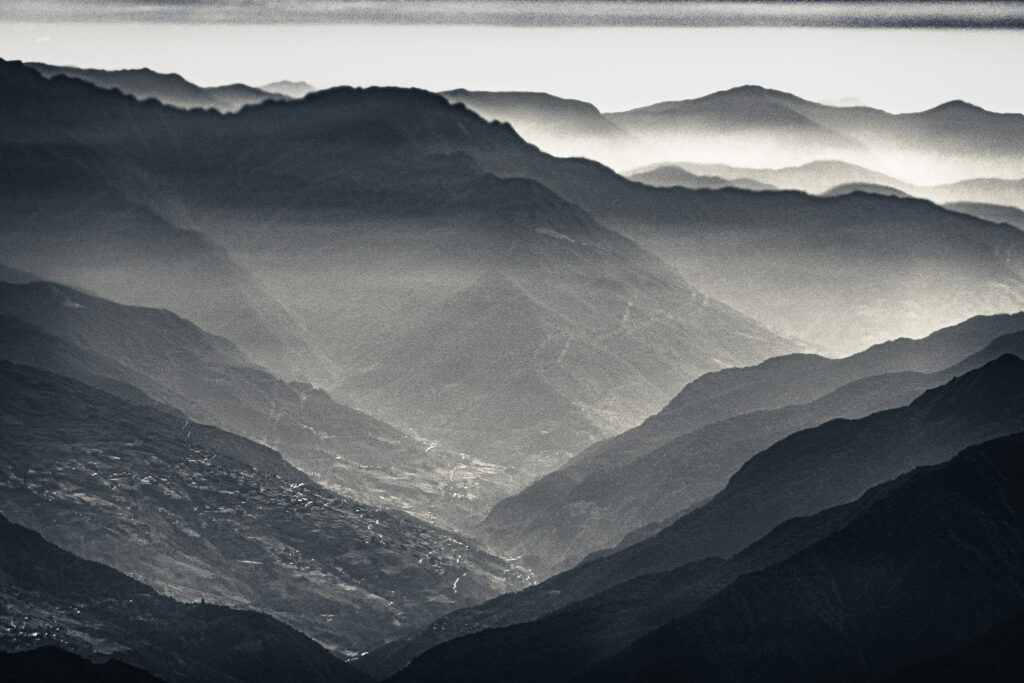
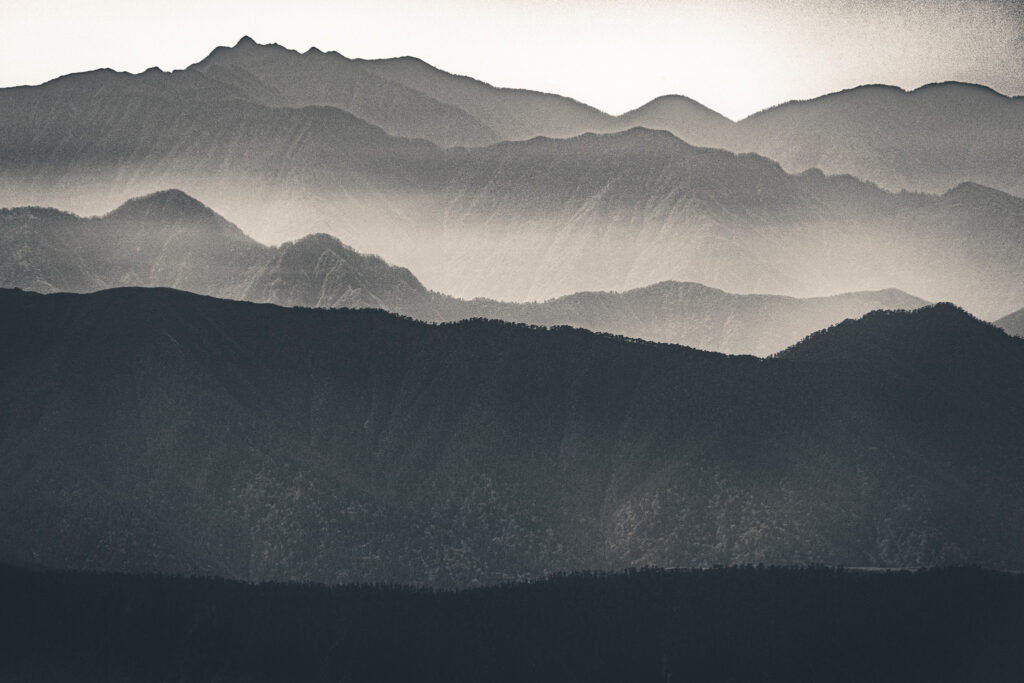
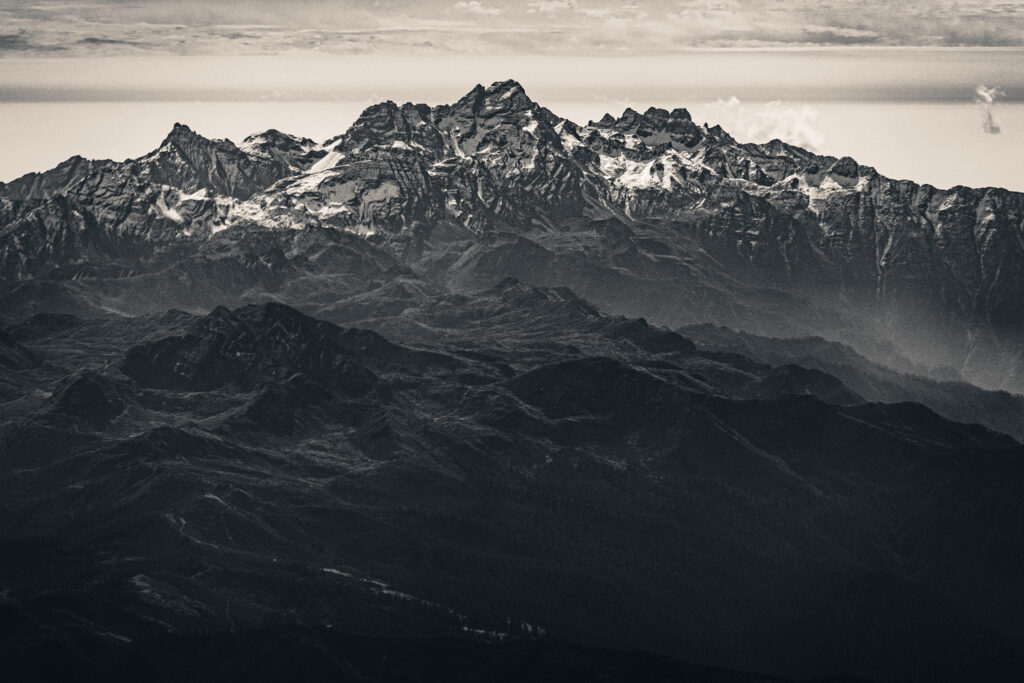
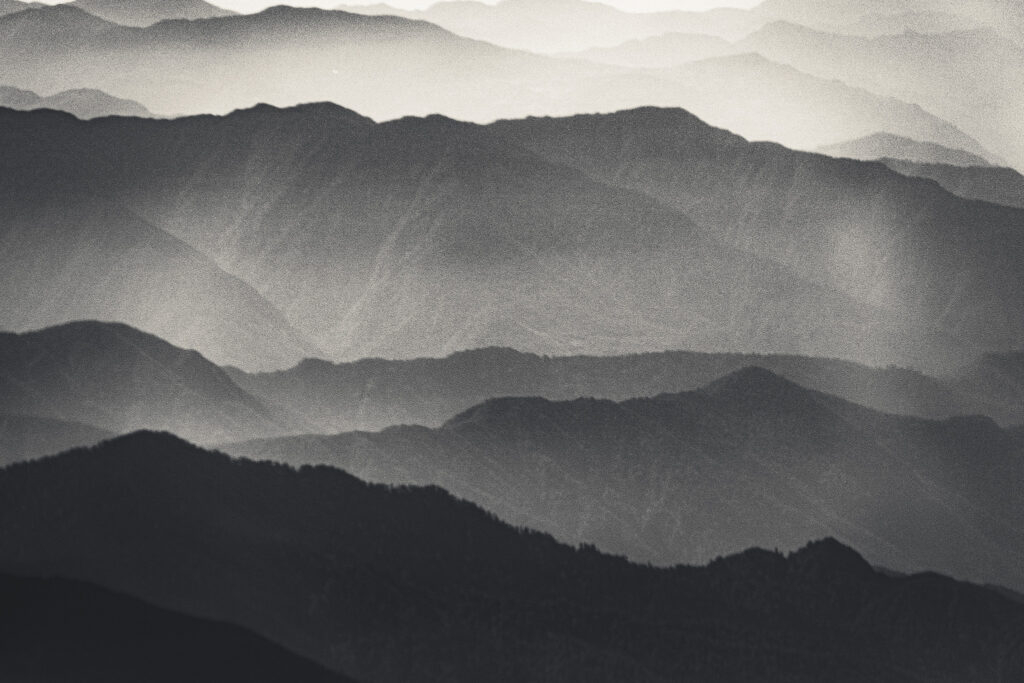
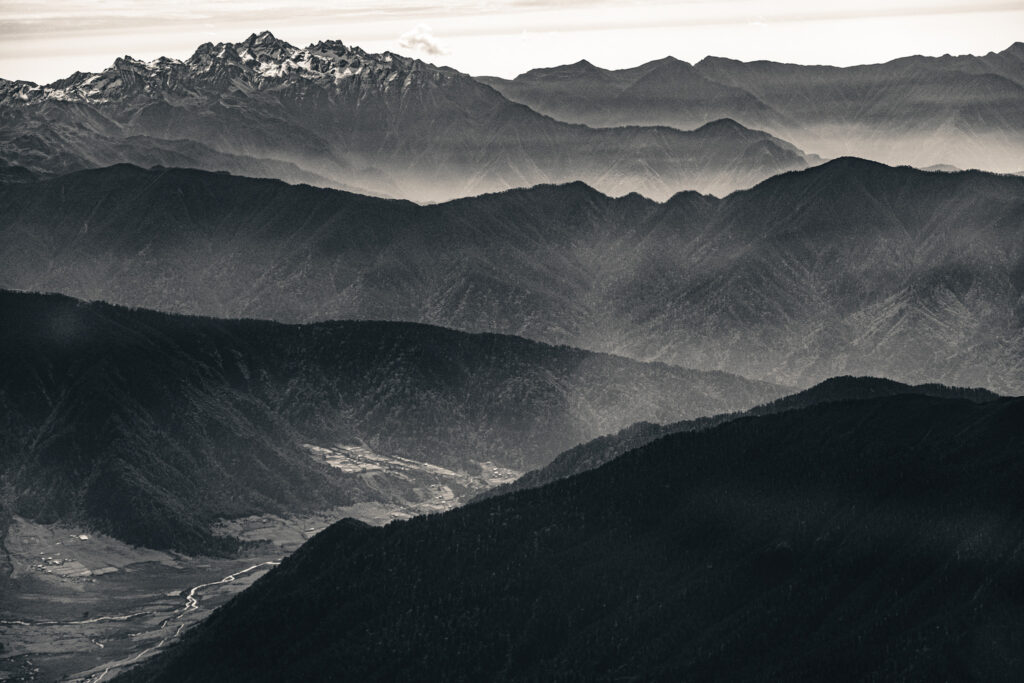
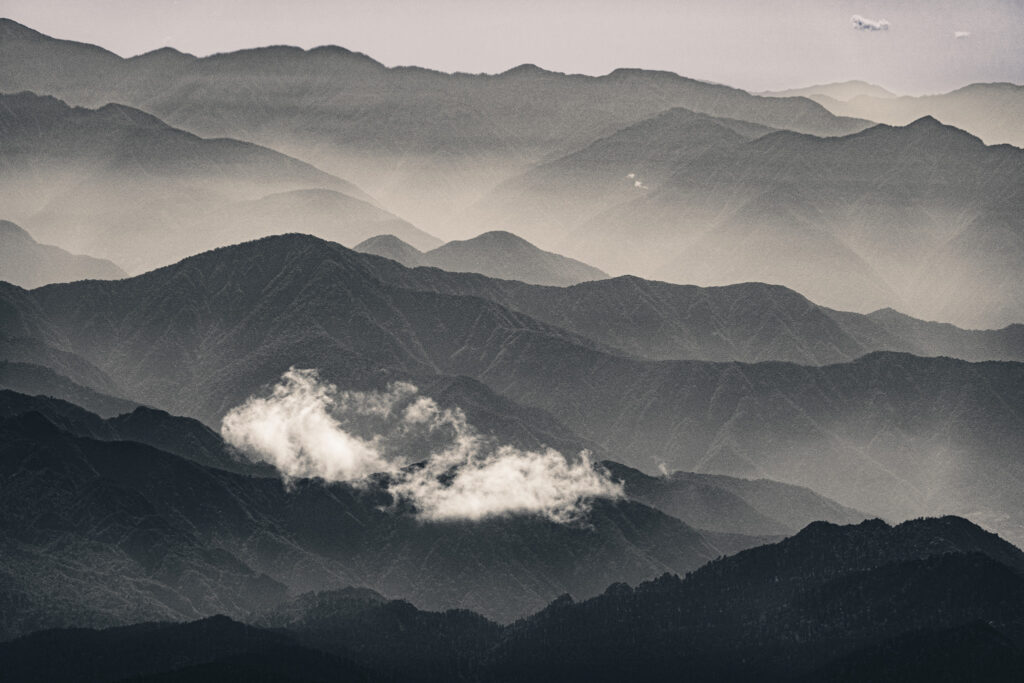
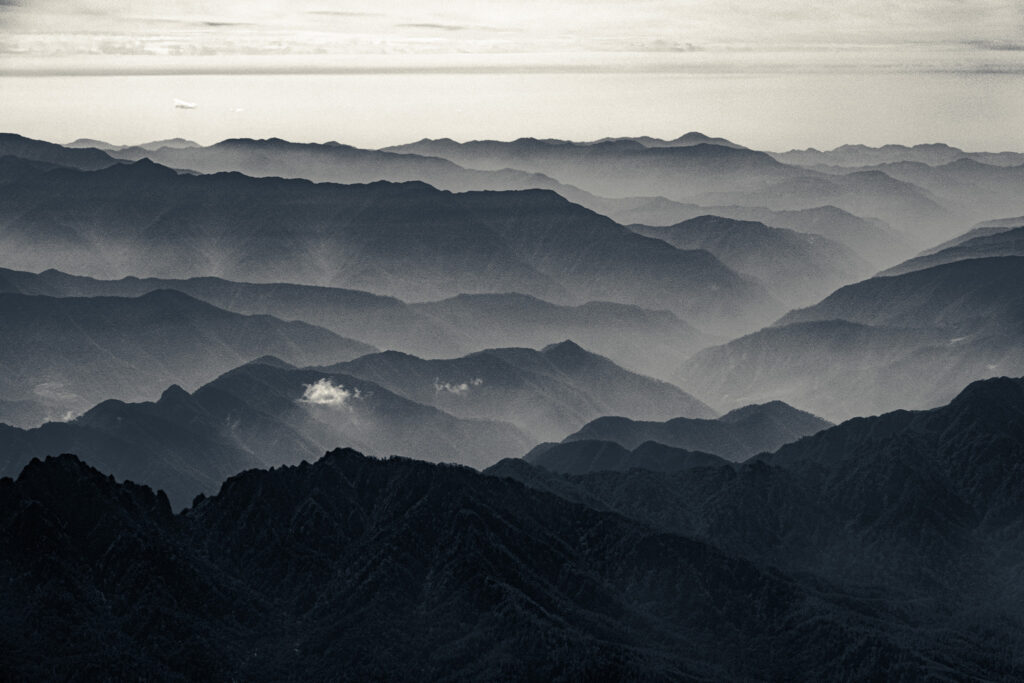
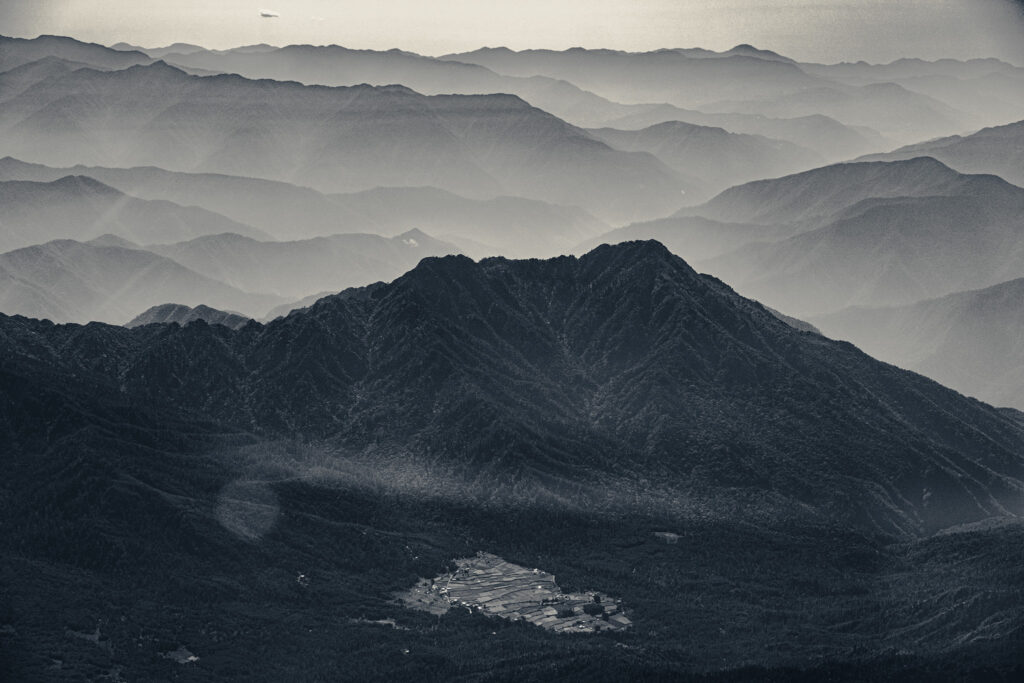
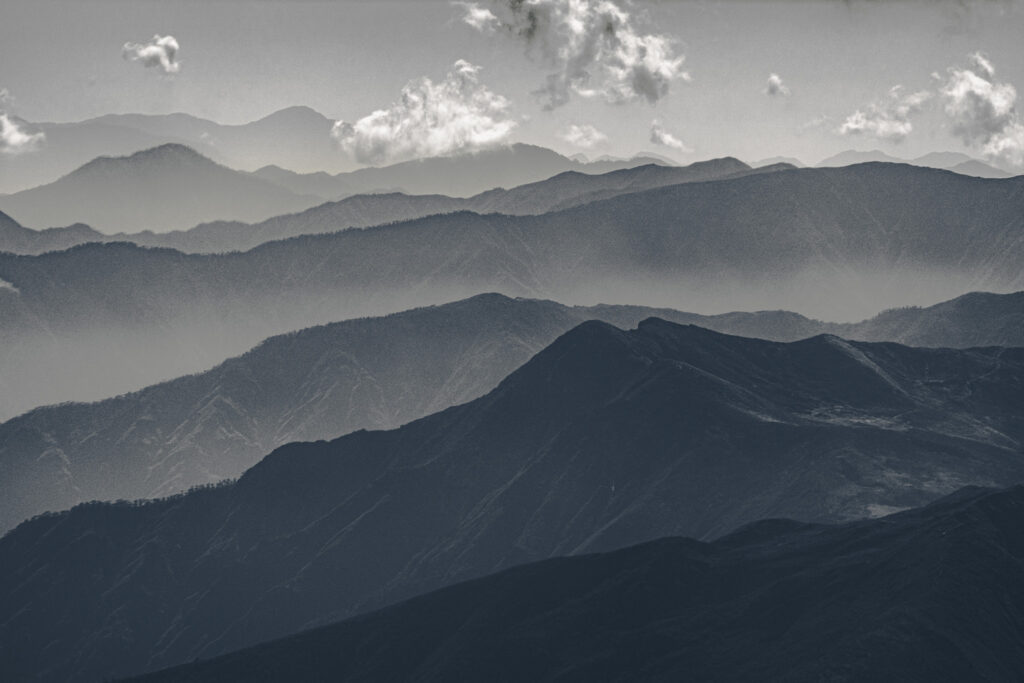
Those deeply corrugated folds of terrain, fuzzed with firs and punctuated with the occasional jagged outcrop of stone, are the Inner Himalayas. Beyond them lay the Duars (which have been described to me as a pestilential jungle), and beyond them in turn is the teaming floodplain of the Brahmaputra, draining India and Bangladesh through Dhaka into the Bay of Bengal. Of course, none of that is visible past the immediate distance, as the ridges and valleys fade into blurs like a Chinese ink landscape. It’s autumn, and the farmers of India are burning the stubble in their harvested fields, with the gathered smoke backing up in Bhutan’s valleys against the bulk of the greater ranges to the north at the Tibetan border.
The vague and immaterial scene for some reason leads me to recall the story of Tulshuk Lingpa, the charismatic Buddhist terton who, after performing a number of well-attested miracles, in 1962 led his followers into the mountains near Kanchenjunga in Nepal, rather to the west of where this airplane is taking me. There Tulshuk in a blinding snowstorm may or may not have opened a gate into Demoshong. Think Shambhala — or Shangri-La if you prefer. These are all names for a type of hidden realm known as a beyul, a refuge and place of eternal life.
Which is something I do not have. It’s another birthday in my fleeting middle age, and I’m desultorily taking photos from a window seat on the short flight between Bumthang and Paro.
Leave a Reply